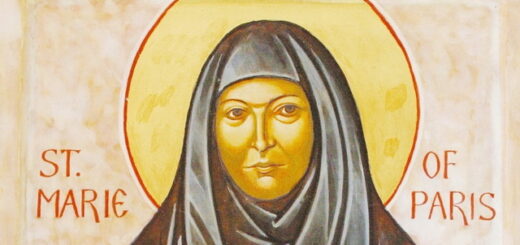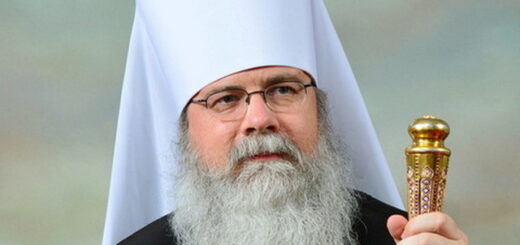The Meeting of the Lord

Ἡ Ὑπαπαντὴ τοῦ Κυρίου or Hypapante is translated as The Meeting of the Lord. Historically, that is to say apparently, it reminds us of the meeting of Saint Simeon Theodochus and the child Christ. However, this event is seen spiritually as the meeting of the Old Testament with the New. The holy and righteous Simeon prefigures all the generations, starting with Adam, who awaited Christ.
“Let Adam rejoice, who through Simeon said to Christ: “Now, O Master, You let Your servant depart in peace, according to Your word (Lk. 2:29): now You set me free from corruption, now You free me from death, now You free me from sorrow, O Son and my God! ” [1]
The hieromartyr Methodius (+312) says that “Simeon the old man, getting rid of the infirmity of advanced age and having put on the strength of hope, hastened – in the face of the Law – to meet the Giver of the Law »[2]. This Giver is the God, who was born forty days ago in a cave in Bethlehem.
Mary and Joseph brought Him to the Temple in Jerusalem to be consecrated to the Lord (Lk. 2:23). Was it necessary to consecrate God to the Lord? Of course not ! Now, “all righteousness must be fulfilled in this way” (Mt. 3:15), because Christ did not come to “abolish the Law, but to fulfill it” (Mt. 5:17). .
They came to the Temple in Jerusalem where sacrifices are offered to the Lord and where the high priest pronounces His name in the Holy of Holies – the name of the God Sabaoth, of Jehovah (Ex. 3:14; John 8:58), of the Ancient of Days (Dan. 7:9). The name of Him who now rests in the arms of Mary [3].
Saints Simeon and Anna
What do we know about the righteous Simeon Theodochus and the prophetess Anna – these two representatives of the Old Testament who had the honor of seeing with their own eyes the promised Messiah?
According to Church tradition, the righteous Simeon was the priest in the Temple of Jerusalem after Zechariah, the father of John the Baptist, who was killed on the orders of King Herod.
Long before the events of the Feast of the Presentation, the righteous Simeon, among seventy-two scholars, translated the Holy Scriptures from Hebrew into Greek (2nd century BC). He received the book of the prophet Isaiah by lot, and when he translated “Behold, the virgin will conceive and give birth to a son” (Is. 7:14), he decided to change the word “virgin” to “woman “. At that moment, an angel stopped him and told him that he would not die until he saw the prophecy come true with his own eyes.
According to another oral tradition, the righteous Simeon, returning from Egypt to Jerusalem, threw his ring into the river. “If I find him, I will believe the prophecy of Isaiah.” Later, Simeon was eating fish and came across his ring.
In any case, the righteous Simeon died at a very old age immediately after the events of the Meeting. According to the life of Simeon, compiled by Saint Demetrius of Rostov, he died at the age of 360.
If the old man Simeon prefigures Old Testament Israel, the prophetess Anna, however, becomes an image of the New Testament Church. This is why Simeon asks for absolution while Anna goes to preach the good news of the Messiah “to all those who were waiting for deliverance in Jerusalem” (Lk. 2: 38).
In this context, it would be interesting to talk about the meaning of names. Simeon is translated as “heard of God” and Anna means “grace”. Simeon’s request was, indeed, heard by God whom he had the honor of holding in his arms. Anna, being the foreshadow of the New Testament Church, becomes filled with grace.
Saint Amphilochius of Iconium (+ after 394) thus transmits the words of the prophetess Anna: “Do you not see this Child? It is He who created the times, He established the heavens, He spread out the earth, He surrounded the sea with dreams. This Child, in the time of Noah, opened the gates of the flood… He freed our ancestors from Egypt by the staff of Moses, divided the Red Sea and… pouring out manna for them in the desert, He gave them the land as an inheritance” [4].
These words are confirmed by the liturgical text: “The chaste Anna prophesies great things, confessing that Christ is the Creator of heaven and earth” [5].
[1] St. Cyril of Alexandria. The homily on the Meeting of our Lord and Savior.
[2] Hieromartyr Methodius of Mount Olympus. Homily on Simeon and Anna. The day of the Hypapante., 6-8.
[3] “The Ancient of days who, on Mount Sinai, gave the ancient law to Moses. Today, He is seen as a child. And, according to the law, being the Creator of the law, He is presented in the Temple fulfilling the law.” Vigils of the Feast of the Meeting, 1st sticheron of the litia.
[4] Saint Amphilochius of Iconium. Homily on the Feast of the Meeting. Homily II.
[5] Chorus of the 9th song of the Feast. The same text is found on the icon of the Mother of God of Kykkos: kleimo of st. Anna (12th century, St. Catherine monastery, m. Sinai).



